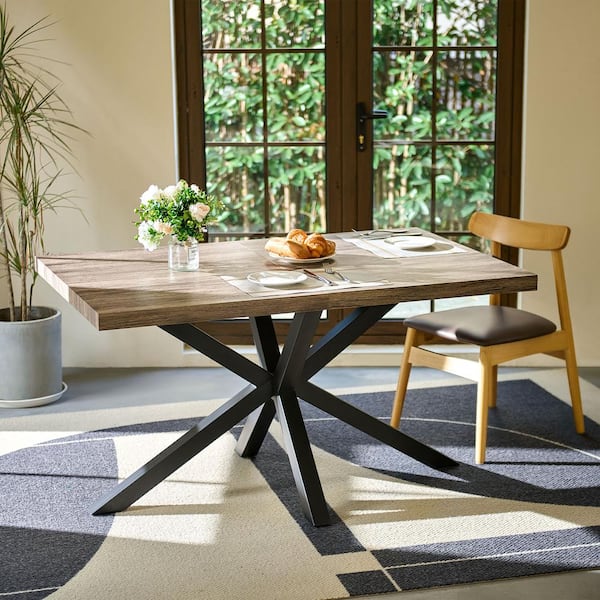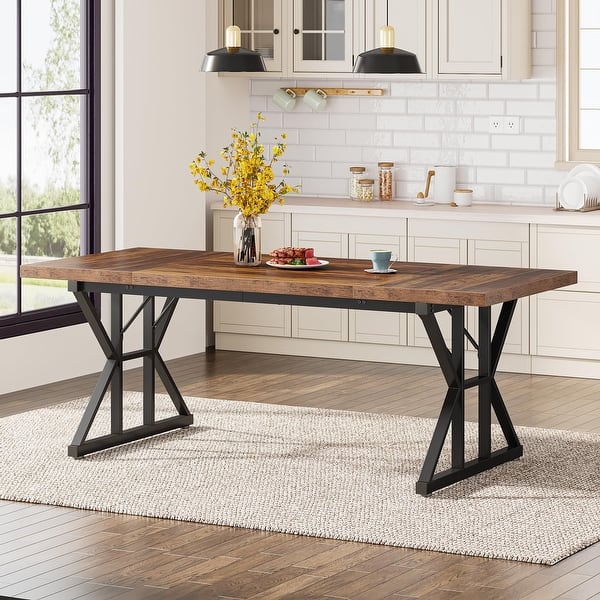Accomplish Modern Sophistication Making Use Of Smooth Dining Table Legs Wood Styles
Important Considerations for Selecting the Right Dining Table Legs Timber
Picking the proper wood for dining table legs involves a nuanced understanding of various elements that influence both functionality and visual charm. The choice of wood type, varying from robust hardwoods to a lot more delicate softwoods, plays an essential role in making sure resilience and security. In addition, considerations concerning budget, maintenance, and layout need to be carefully assessed. Each of these elements can considerably impact the total experience of your eating area. Understanding how these aspects interrelate is crucial for making an informed decision that satisfies your specific demands and preferences - Dining Table Legs Wood. What considerations will you prioritize in your option process?
Relevance of Wood Type

Hardwoods, such as oak, maple, and walnut, are typically chosen for their toughness and resistance to use. These types of wood supply a durable structure that can endure everyday use, making them excellent for eating tables that experience constant celebrations. In contrast, softer timbers like yearn might be a lot more vulnerable to scratches and damages, which might not be optimal for high-traffic locations.
Furthermore, the selection of wood can additionally impact the convenience of upkeep. Some timbers need routine oiling or sealing to protect their appearance, while others may be more forgiving. Inevitably, picking the ideal timber kind includes stabilizing visual considerations with useful needs, ensuring that the table legs not just look enticing yet likewise stand the test of time.
Examining Security and Toughness
When reviewing eating table legs, one have to take into consideration the security and stamina they give to the general structure. The legs are crucial in supporting the table top and ensuring the eating experience is safe and pleasurable. A stable table is necessary for preventing tipping or wobbling, which can cause spills or crashes throughout meals.
The selection of wood type dramatically affects toughness. Hardwoods such as maple, oak, and walnut are usually a lot more durable and long lasting than softwoods like yearn or fir. Additionally, the thickness and design of the legs play a crucial role; thicker legs or those with a tapered style can supply far better assistance and stability.

Visual Considerations
While functionality is critical, the visual charm of dining table legs can not be forgotten, as they significantly influence the general style and atmosphere of the you could try these out eating area. The choice of timber, style, and surface can detract or enhance from the table's visual impact.

Finishes also play an essential duty in appearances. An all-natural finish can highlight the wood's inherent beauty, while painted or discolored legs can introduce color and individuality into the room. The proportion and scale of the legs relative to the table top and surrounding furniture needs to be taken into consideration to make sure aesthetic equilibrium and communication.
Eventually, the dining table legs need to not just offer a useful function yet additionally contribute to a cohesive and welcoming environment, making them a crucial consideration in the overall layout of the eating area.
Upkeep Demands
To make certain durability and maintain the charm of wood table legs, regular maintenance is essential (Dining Table Legs Wood). Timber is an all-natural material that can be at risk to damage from moisture, heat, and use. For that reason, developing a regular care plan will significantly boost the resilience of your table legs.
Begin with routine dusting making use of a soft, lint-free fabric to remove dust and debris that can damage the surface. For even more thorough cleaning, utilize a light soap remedy and damp towel, preventing excess wetness that might leak into the timber. It is recommended to use a top quality wood polish or conditioner every few months to nurture the wood and maintain its luster.
Furthermore, think about the atmosphere where the table is positioned. Avoid straight sunshine, as it can create fading, and make use of placemats or coasters to secure the surface area from warmth and dampness. Address any type of scratches or dents promptly with suitable wood filler or touch-up pens to avoid further damage. By sticking to these upkeep requirements, you will not only maintain the visual charm of your wood table legs yet additionally extend their useful life expectancy.
Budget and Cost Variables
Budget best site and expense factors frequently play a critical duty in the decision-making procedure for picking wood dining table legs. When evaluating options, it is important to establish a clear spending plan that aligns with your overall furnishings investment. The expense of wooden table legs can vary substantially based on the kind of layout, timber, and craftsmanship intricacy.
Hardwoods such as cherry, walnut, and oak normally regulate higher prices because of their durability and visual appeal. On the other hand, softer woods like yearn might be much more inexpensive but could not offer the very same longevity. Additionally, custom or artisan-crafted legs can sustain extra prices, reflecting the ability and time invested in their production.
It is also essential to take into consideration the prospective long-term value of your financial investment. While choosing lower-cost products could appear monetarily prudent originally, they might require even more frequent replacement or repair services, ultimately raising overall expense.
As a result, visit here balancing quality and cost is essential. Prioritize products that fulfill your aesthetic preferences while ensuring they fit pleasantly within your budget plan, enabling you to produce a dining area that is both aesthetically enticing and practical.
Final Thought
In conclusion, picking the suitable timber for eating table legs requires cautious factor to consider of various aspects, including timber type, security, looks, maintenance, and budget. Inevitably, an educated decision will boost the longevity and aesthetic appeal of the dining table, making sure fulfillment and capability for years to come.
Choosing the appropriate kind of timber for eating table legs is essential for both aesthetic charm and architectural stability. Inevitably, choosing the proper timber type includes stabilizing aesthetic considerations with practical needs, ensuring that the eating table legs not just look enticing however likewise stand the examination of time.
It is a good idea to use a top quality timber gloss or conditioner every couple of months to nurture the timber and preserve its luster.
The cost of wood eating table legs can differ dramatically based on the type of craftsmanship, style, and timber complexity.
In conclusion, selecting the proper timber for eating table legs necessitates mindful consideration of various variables, including wood kind, stability, aesthetic appeals, maintenance, and budget.